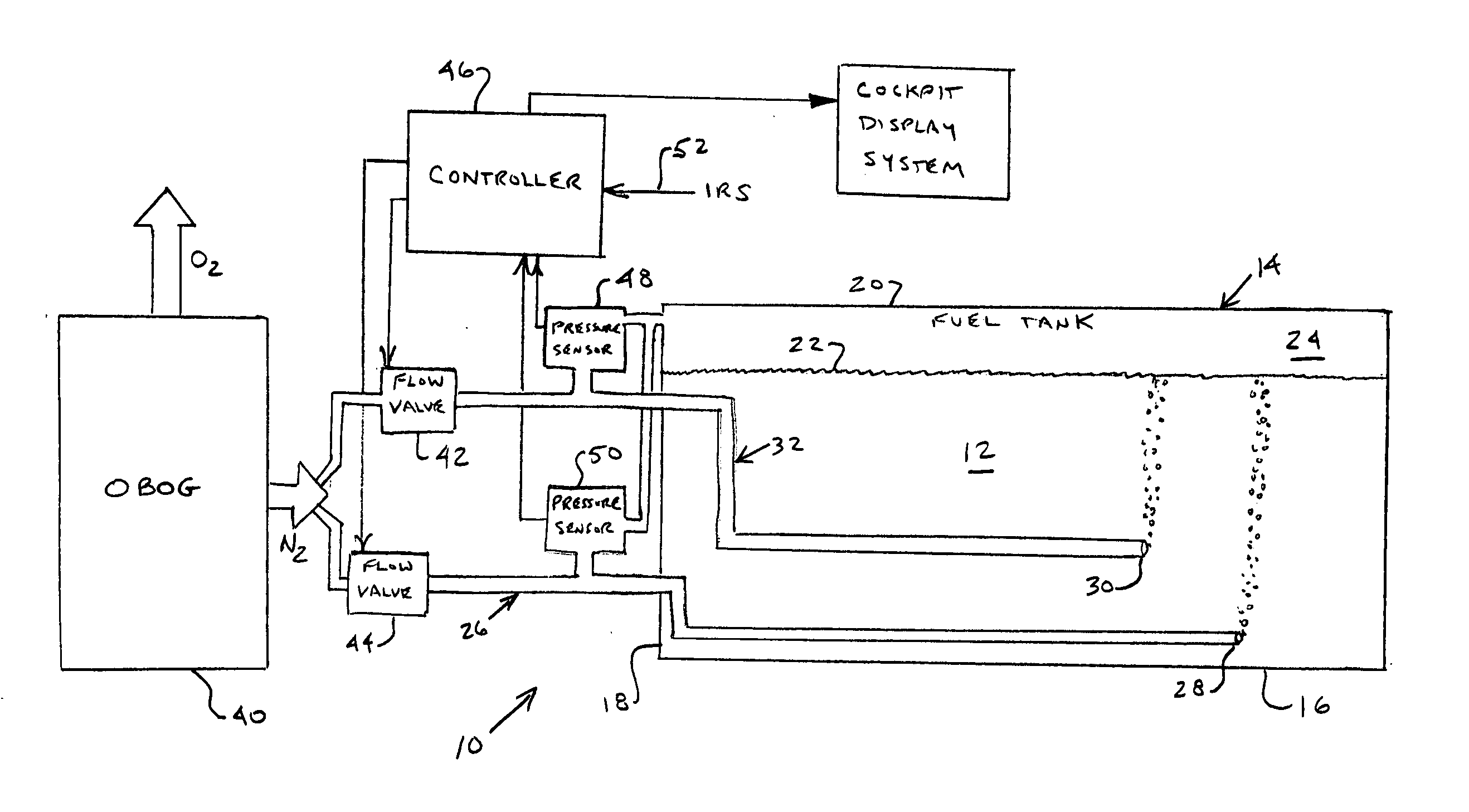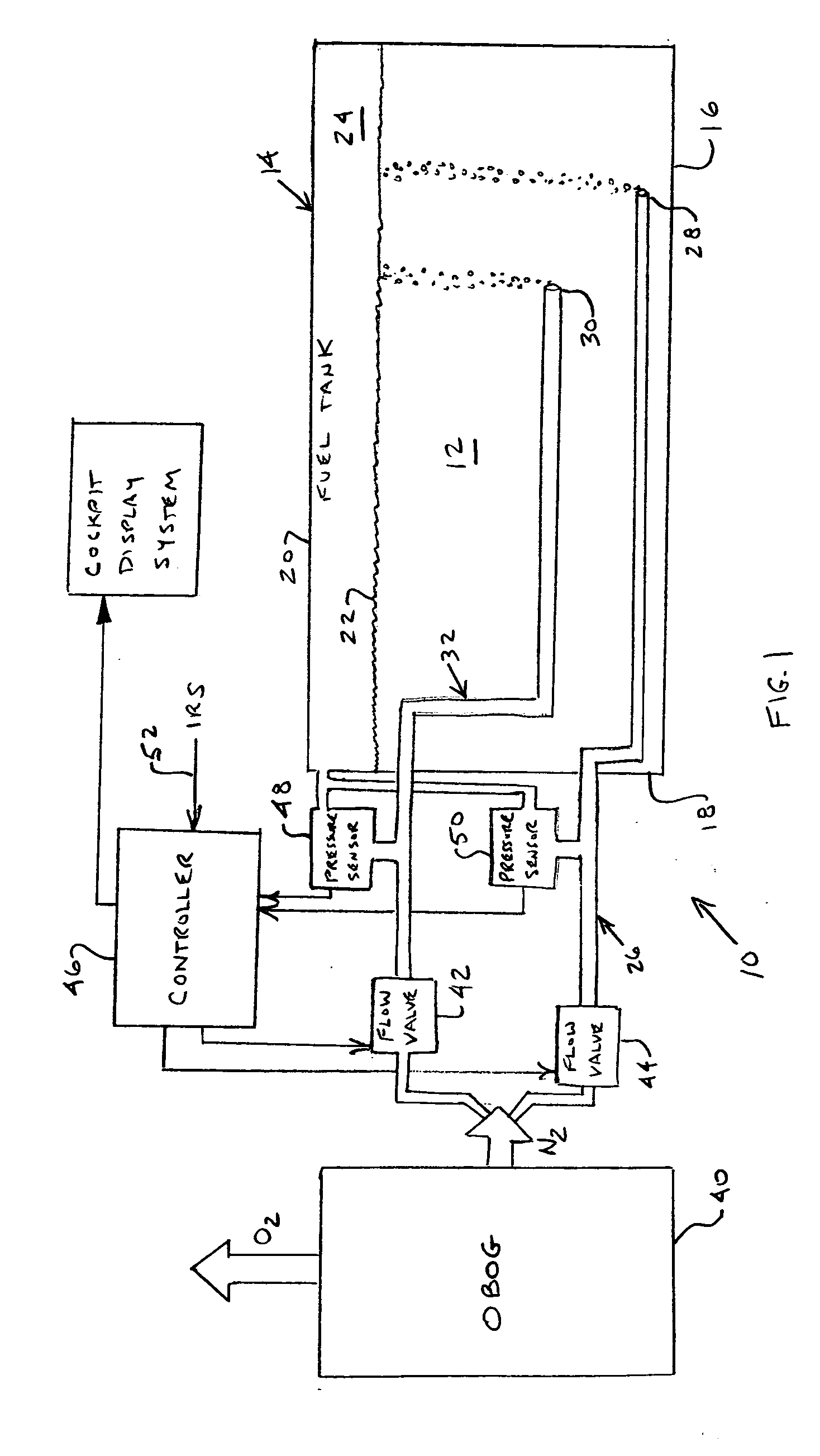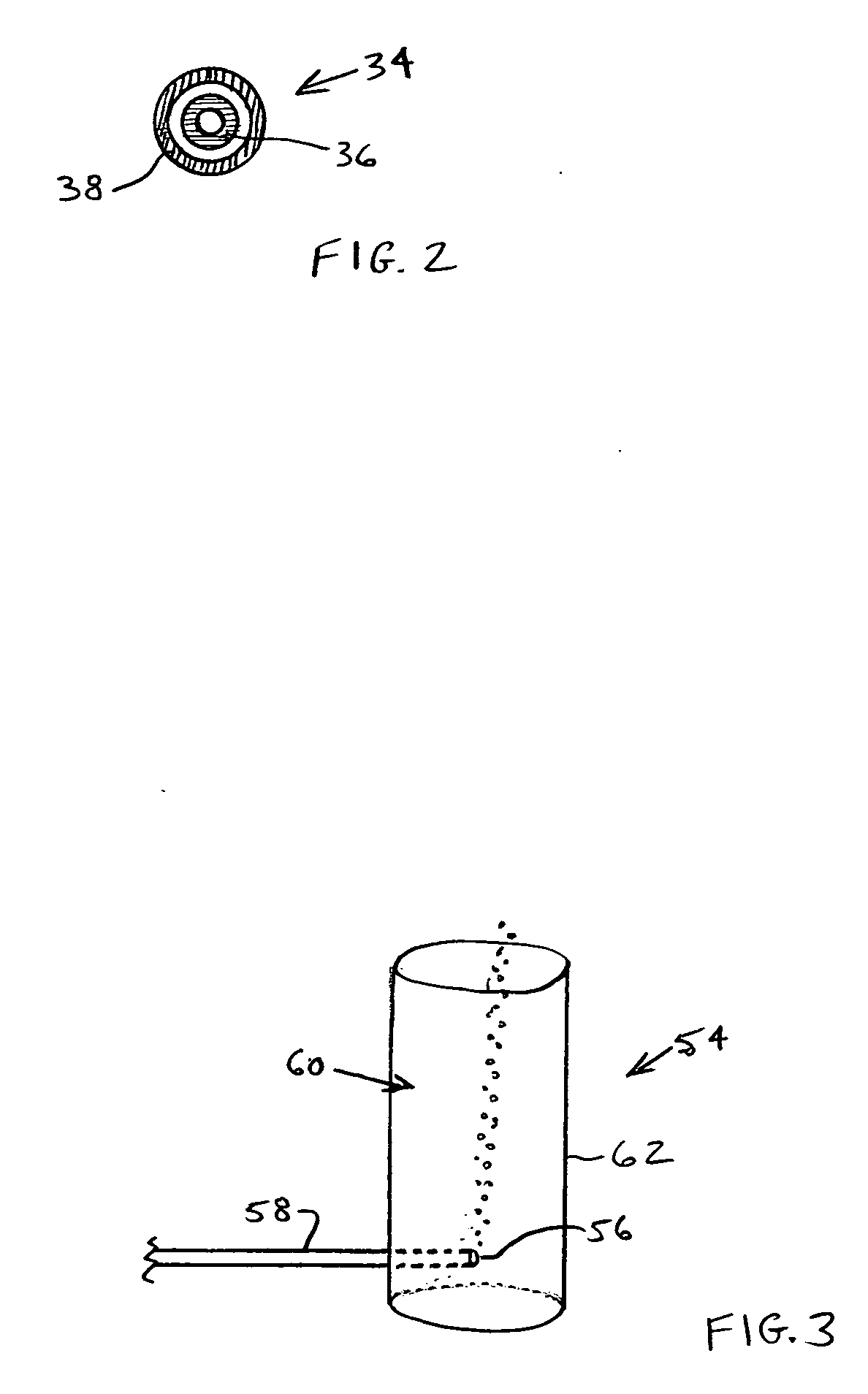Pressure-based aircraft fuel capacity monitoring system and method
a fuel capacity monitoring and pressure-based aircraft technology, applied in liquid/fluent solid measurement, machines/engines, instruments, etc., can solve the problems of in-flight explosion or fire, reducing only the severity of the problem, and requiring only the replacement of such wiring located within the fuel tank
- Summary
- Abstract
- Description
- Claims
- Application Information
AI Technical Summary
Benefits of technology
Problems solved by technology
Method used
Image
Examples
Embodiment Construction
[0017] The present invention utilizes non-electric pressure transducers to dynamically provide a directly-measurable indication of the amount of fuel remaining in an aircraft fuel tank. In its most basic form, Teflon tubing is used to form fluid-conveying conduits that replace the prior art wired sensors. Thus, in one currently-preferred embodiment, at for example each tank bottom location of a prior art capacitive sensor, a distal open end of a length of Teflon tube is located closely proximate the tank bottom. The tubing is connected (exterior to the fuel tank) to a generator or supply of nitrogen, as for example an OBOG (On-Board Oxygen Generator) which has a semi-permeable membrane that, when pressure is applied to one side of the membrane, generates oxygen (which can be returned to the aircraft cabin) and nitrogen (for use in the inventive system). A relatively small, preferably constant volume flow of the OBOG-generated nitrogen is fed through each Teflon tube to bubble out th...
PUM
 Login to View More
Login to View More Abstract
Description
Claims
Application Information
 Login to View More
Login to View More - R&D
- Intellectual Property
- Life Sciences
- Materials
- Tech Scout
- Unparalleled Data Quality
- Higher Quality Content
- 60% Fewer Hallucinations
Browse by: Latest US Patents, China's latest patents, Technical Efficacy Thesaurus, Application Domain, Technology Topic, Popular Technical Reports.
© 2025 PatSnap. All rights reserved.Legal|Privacy policy|Modern Slavery Act Transparency Statement|Sitemap|About US| Contact US: help@patsnap.com



